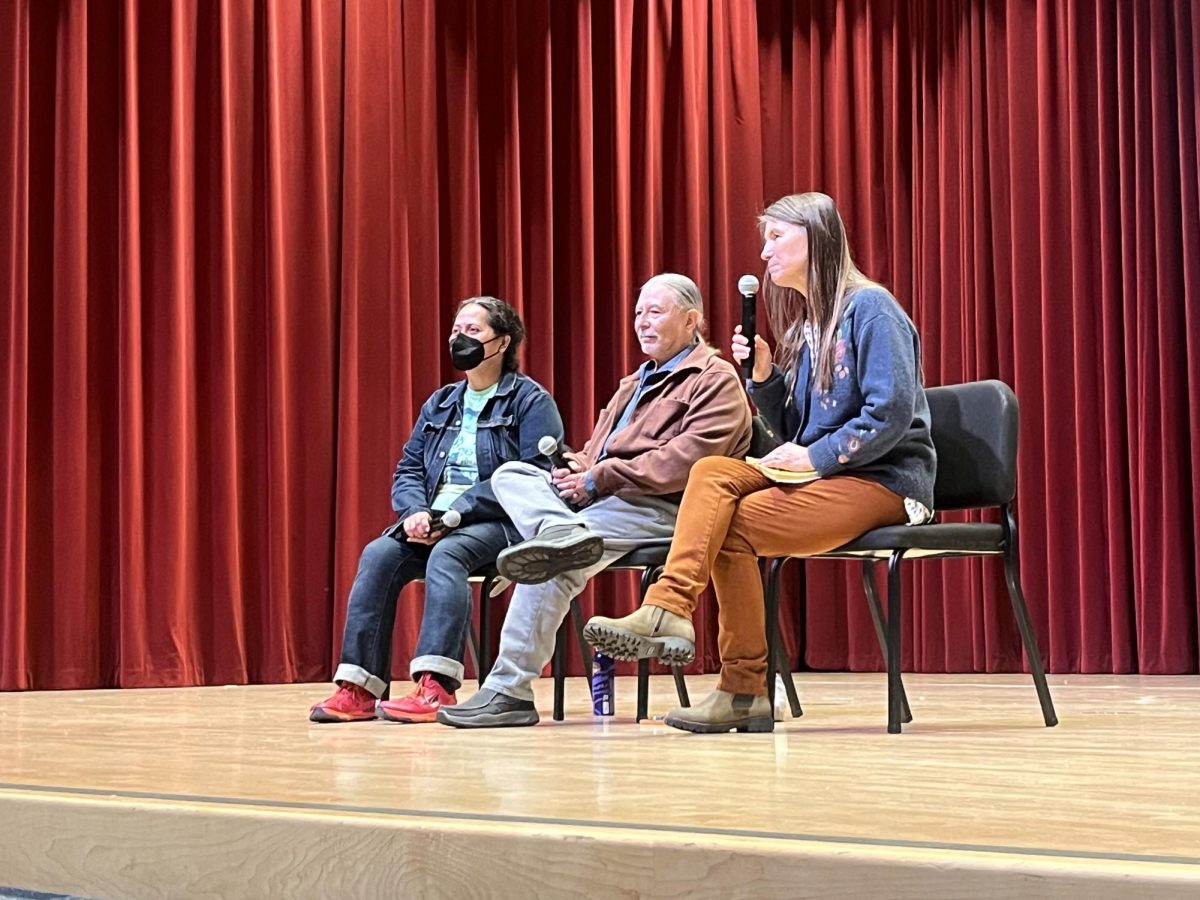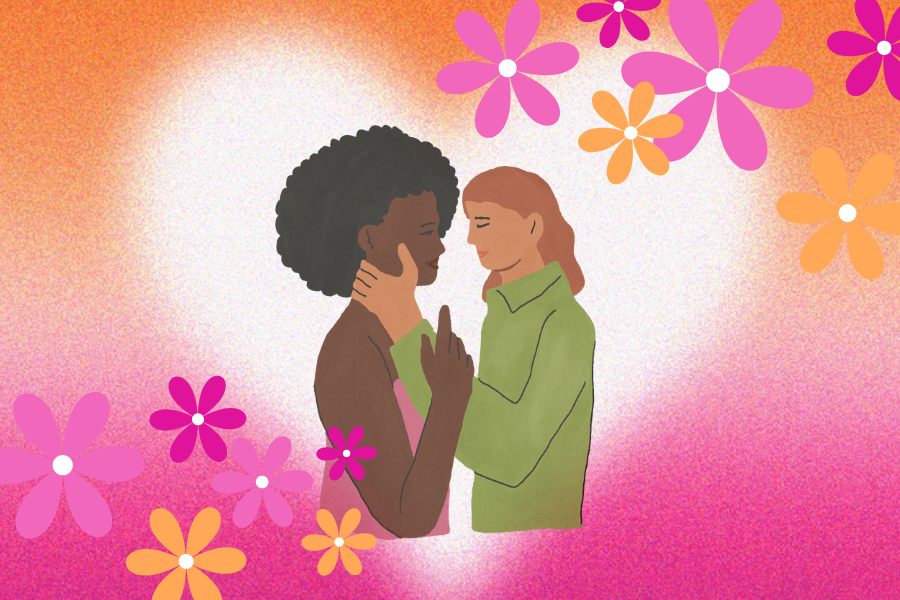Kabuki actor Kyôzô Nakamura displayed four hundred years of Japanese theater tradition in Knuth Hall last Friday as part of a lecture and demonstration of Kabuki theater. After a brief introduction by Professor Yukihiro Goto, Nakamura took the stage in full costume, a large kimono, wig and white paint on his face, neck and feet.
Claps and cheers in Japanese erupted throughout the packed hall as Nakamura danced before the crowd. At first, the applause came in waves, as a single person quietly clapping would soon be joined by the entire auditorium. People felt unsure how to react to the performance.
Kabuki theater, unlike most modern western theater experiences, thrives off of audience participation. Goto explained to the audience before the presentation that shouting was not only allowed, it was encouraged. Kabuki actors feed off the energy that the crowd brings to the show.

As Nakamura removed the top layer of his costume for the second half of “Fuji Musume,” the crowd found its courage and people began to loudly and bravely cheer, as people do at sporting events, in both English and Japanese.
Between the two dances, professor Ryuichi Kodama of Waseda University in Tokyo taught a brief history of Kabuki, starting from the 1600s and the role of the onnagata, male actors, like Nakamura, who play female roles.
“At the beginning men and women and boys and girls performed together. Eventually, however, they had to be separated,” Kodama said. “From that point on men had to play female roles and the profession of onnagata started.”
Men performing the roles of women in theater was commonplace in the time of the ancient Greeks and later during the time of Shakespeare. Similarly, women would play male characters. Sometimes this resulted in kabuki plays where all the characters were played by actors of the opposite sex. Kabuki remains the only theater style that still has actors specializing in playing female roles.
According to Kodoma, the biggest difference between Shakespearean acting and Kabuki acting is consistency.
“We don’t have a living tradition of Shakespearean acting. We don’t know how his actors actually performed 200 years ago,” Kodoma said. By contrast, kabuki plays are, for the most part, still performed the same way they were performed at their inception in the 1600s.
Nakamura, a 47-year kabuki veteran actor took the stage a second time. This time Nakamura demonstrated the onnagata method for acting feminine. Still in white paint but having removed his costume, Nakamura pointed out that in kabuki theater, the reality is exaggerated to the point of being surreal.
Nakamura manipulates his body to become more feminine; he pulls his shoulders back so that his shoulder blades almost touch, walks in a “pigeon-toed” manner and1 moves his chest in a “sideways eight” motion as he walks. The balance between all his movements is a delicate one as the slightest mistake or a break in concentration can shatter the illusion he so carefully set out to create. To prove it, he showed what would happen if he walked with relaxed shoulders and the result had the entire theater laughing.
“Onnagata never imitates a real woman. Onnagata creates, based on his male body and emotion, the feminine body and emotion,” Nakamura explained. “It is a fictional, abstract image of a woman seen through a man’s eyes.”
The final dance of the night was Shakkyo (The Lion Dance). Nakamura, this time dressed in a white, gold and red costume and wore a long, bright red wig meant to evoke a lion’s mane. Set to traditional Japanese music, Nakamura made his wig dance like a flame as he shook his head while moving across the stage.
At the end of his performance, the traditional Japanese music gave way to the voice of Ritchie Valens’ as “La Bamba” came through the speakers. The sudden transition didn’t stop Nakamura who continued to whip his hair back and forth, this time to the sounds of a classic Spanish rock song.







